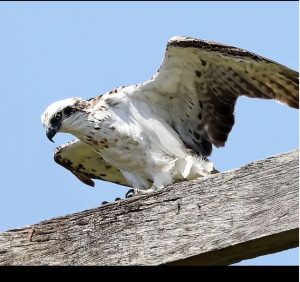
Birds That Can Perform Tricks and How to Train Them
Birds are intelligent creatures that can be trained to perform a variety of tricks. Some of the most common tricks that birds can learn include:
- Stepping up: This is a basic trick that all birds should learn. To teach your bird to step up, hold your finger out and say “step up.” When your bird steps onto your finger, give it a treat.
- Spinning: To teach your bird to spin, hold a treat in front of its face and move it in a circular motion. When your bird follows the treat with its head, say “spin” and give it a treat.
- Waving: To teach your bird to wave, hold your hand out in front of its face and wave it back and forth. When your bird waves back, say “wave” and give it a treat.
- Talking: Some birds can be trained to talk. To teach your bird to talk, repeat a word or phrase over and over again. When your bird says the word or phrase, give it a treat.
The best birds to train for tricks
- Parrots: Parrots are one of the most intelligent birds and are known for their ability to learn tricks. Some popular parrots for trick training include cockatiels, macaws, and African greys.
- Mynah birds: Mynah birds are also intelligent birds and can learn a variety of tricks. They are relatively large birds, so they may not be a good choice for first-time bird trainers.
- Budgies: Budgies are small, social birds that are relatively easy to train. They are also relatively inexpensive, making them a good option for budget-minded bird owners.
- Lovebirds: Lovebirds are another small, social bird that is relatively easy to train. They are also very affectionate, making them a good choice for people who want a bird that will bond with them closely
Tips for training birds to perform tricks
- Start with simple tricks and gradually work your way up to more complex tricks.
- Be patient and consistent with your training.
- Use positive reinforcement, such as treats or praise, to reward your bird for good behavior.
- Avoid getting frustrated if your bird doesn’t learn a trick right away. Just keep practicing and eventually it will get it.
Additional tips for training birds to perform tricks
- Choose a quiet place to train your bird where there are no distractions.
- Make sure your bird is in a good mood before you start training.
- Break the trick down into small steps and teach your bird one step at a time.
- Be sure to end each training session on a positive note.
With patience and consistency, you can train your bird to perform a variety of tricks. This can be a fun and rewarding way to bond with your bird and teach it new skills.
Here are some additional things to keep in mind when training your bird to perform tricks:
- The younger the bird, the easier it is to train.
- Some birds are more motivated by treats than others. Experiment to find what motivates your bird the most.
- Be patient and don’t get discouraged if your bird doesn’t learn a trick right away. Just keep practicing and eventually it will get it.
With a little patience and effort, you can train your bird to perform a variety of tricks that will amaze and entertain you and your guests.
Safety
The most important safety consideration when training birds is to avoid using any methods that could harm the bird, either physically or psychologically. This means preventing any form of punishment, such as yelling, hitting, or withholding food or water. Instead, it is essential to use positive reinforcement methods, such as rewarding the bird with treats or praise for good behavior.
Another important safety consideration is to be aware of the bird’s environment. Ensure the training area is free of hazards, such as open windows, electrical cords, or other animals. Supervising the bird closely during training sessions is also essential to prevent accidents.
Safety tips for training birds to perform tricks
- Use positive reinforcement methods only. This means rewarding the bird with treats or praise for good behavior. Avoid using any form of punishment, such as yelling, hitting, or withholding food or water.
- Be aware of the bird’s environment. Ensure the training area is free of hazards, such as open windows, electrical cords, or other animals.
- Supervise the bird closely during training sessions. This will help to prevent any accidents.
- Be patient and gentle. Training birds takes time and patience. Stay calm if the bird learns a trick right away.
- Stop the training session if the bird seems stressed or tired. Birds can become stressed if pushed too hard, so it is essential to be sensitive to their needs.
Side effects
Although training birds to perform tricks is generally safe, there are a few potential side effects.
Stress
One of the most common side effects of training birds is stress. This is especially true if the bird is handled slowly or the training sessions are too long or complicated. If a bird is stressed, it may exhibit behaviors such as feather plucking, excessive vocalizations, or aggression.
Boredom
Another potential side effect of training birds is boredom. If the bird is only trained to perform a few basic tricks, it may become bored and restless. To avoid this, it is essential to teach the bird a variety of tricks and to keep the training sessions challenging and exciting.
Injury
Although rare, birds can be injured during training sessions. This can happen if the bird is supervised closely or the training methods are safe. To avoid injuries, it is essential to use positive reinforcement methods and to be aware of the bird’s environment.
How to minimize the risks of training birds to perform tricks
There are a few steps that you can take to minimize the risks of training birds to perform tricks:
- Choose a bird that is well-socialized and enjoys human interaction. Some birds are more naturally inclined to perform tricks than others. If you are still determining whether your bird is a good candidate for training, talk to your veterinarian or a qualified bird trainer.
- Start slowly and gradually increase the difficulty of the training sessions. Try to teach your bird only a few tricks at a time, or the bird will become frustrated.
- Use positive reinforcement methods only. Reward the bird with treats or praise for good behavior. Avoid using any form of punishment.
- Be patient and gentle. Training birds takes time and patience. Stay calm if the bird learns a trick right away.
- Stop the training session if the bird seems stressed or tired. Birds can become stressed if pushed too hard, so it is essential to be sensitive to their needs.
Conclusion
Training birds to perform tricks can be a fun and rewarding experience for the bird and owner. However, it is essential to be aware of this activity’s potential safety and side effects before you begin. By following the safety tips and training tips provided in this article


